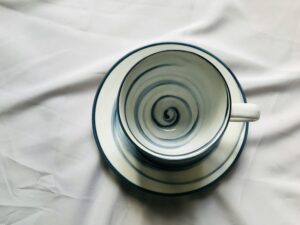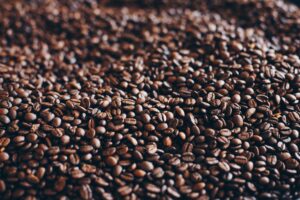If you love a bold cup of coffee but hate the bitter aftertaste that often comes with it, you’re not alone. Many people equate “strong” coffee with harsh or burnt flavors, but it doesn’t have to be that way.
Table of Contents
In this guide, you’ll learn how to make your coffee stronger—without bitterness—by adjusting your technique, grind size, bean selection, and brew method. Whether you’re craving a more intense flavor or a bigger caffeine kick, there are easy ways to get there while keeping your cup smooth and satisfying.
What Does “Strong” Coffee Really Mean?
Before diving in, it helps to define what “strong” means to you. Some people want a higher caffeine content, while others are looking for richer, bolder flavor. Often, it’s a mix of both.
Strong coffee can be:
- More concentrated (higher coffee-to-water ratio)
- Brewed longer or at higher temperatures
- Made with dark roast or fine grind beans
- Free from milk or sweeteners that dilute intensity
But increasing strength often risks increasing bitterness. Here’s how to strike the perfect balance.
1. Use More Coffee, Not More Brew Time
If you want stronger coffee, the easiest place to start is with your coffee-to-water ratio. The Golden Ratio is usually 1:16 (1 gram of coffee for every 16 grams of water). To increase strength, bring it closer to 1:14 or 1:12.
Why this works:
Using more coffee gives a more concentrated flavor without over-extracting, which is the main cause of bitterness.
Avoid: Brewing longer than recommended. Over-brewing releases too many bitter compounds.
2. Choose the Right Grind Size
The finer your grind, the more surface area is exposed, resulting in stronger extraction. But if your grind is too fine for your brewing method, you’ll extract bitter oils and ruin the flavor.
For stronger (but not bitter) coffee:
- Use a medium-fine grind for drip or pour-over
- Use a fine grind for espresso
- Use a coarse grind for French press—but increase the amount of grounds slightly
Pro Tip: Grind fresh right before brewing. Pre-ground coffee loses strength and aroma quickly.
3. Pick the Right Beans
The beans you use play a huge role in flavor and caffeine content. For a strong but smooth cup:
- Choose medium or medium-dark roasts for a rich, balanced profile
- Look for Arabica beans for lower bitterness and acidity
- If you want more caffeine, consider Robusta blends (but use sparingly—they’re much more bitter)
Flavorful options for strong brews:
Sumatra, Guatemalan, or Brazilian beans tend to offer bold taste without sharp bitterness.
4. Use the Right Brew Method
Some brewing methods naturally yield stronger, smoother coffee. Here’s how they rank for strength and balance:
French Press
Great for bold, full-bodied coffee with low acidity. Use a coarser grind and steep for 4 minutes max.
AeroPress
Compact, quick, and capable of espresso-like strength without bitterness. Ideal for single servings.
Espresso Machine
Naturally strong and concentrated, but smooth if the grind, dose, and pressure are correct.
Pour-Over (V60 or Chemex)
Clean and nuanced, but can be made stronger by adjusting grind size and pouring more slowly.
Cold Brew
Low acidity and very smooth. You can make it stronger by steeping longer or diluting less when serving.
5. Watch Your Water Temperature
Water that’s too hot (above 205°F or 96°C) can cause over-extraction, making your coffee bitter. Water that’s too cool won’t extract enough, leaving you with weak coffee.
Ideal brewing temperature:
195°F to 205°F (90°C to 96°C)
Tip: Let boiling water rest for 30 seconds before pouring over your grounds.
6. Don’t Let Coffee Sit Too Long
Coffee continues to extract and oxidize if left on a hot plate or in a French press. This can turn a strong cup bitter fast.
Fix:
Pour your coffee into an insulated thermos or cup immediately after brewing. Drink fresh.
7. Add Strength with Caffeine, Not Flavor
If you’re after a caffeine boost rather than just bolder taste, try:
- Double brewing: Brew strong coffee, then use it in place of water for a second batch
- Espresso shots: Add a shot of espresso to regular coffee (a “red eye”)
- Caffeine-enhanced blends: Some 2025 brands add natural caffeine from guarana or green tea for an extra kick
8. Try Low-Bitterness Beans
Some roasters now specialize in beans that have low bitterness by design. Look for labels like:
- “Low-acid” or “smooth roast”
- “Sweet profile” or “chocolate notes”
- “Cold brew optimized” (even when hot brewed, these beans tend to be smooth)
9. Skip the Burnt Beans
Dark roast doesn’t always mean strong. In many cases, it just means burned. Opt for medium-dark if you want bold flavor without the harshness. And always check the roast date—older beans taste flat or bitter.
Final Thoughts
You don’t have to settle for weak coffee or suffer through bitterness just to get a bold brew. By adjusting your coffee-to-water ratio, grind size, brew method, and beans, you can enjoy strong, flavorful coffee that’s smooth and satisfying every time.
With the right tweaks, your morning cup can be rich, robust, and bitterness-free—just the way you like it.






